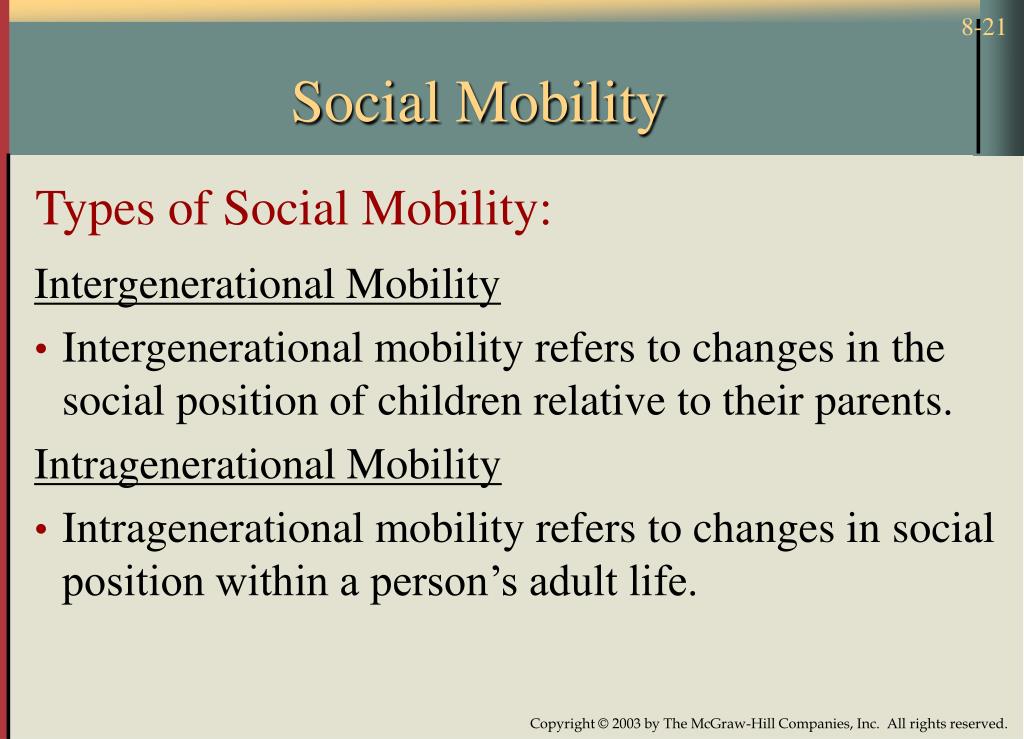

Social media applications used on mobile devices are called mobile social media.Social media applications for mobile devices are an effective way to advertise to consumers because consumers spend so much time on their mobile devices.Certain features make apps more favorable, such as GPS and mobile coupons.The popularity of mobile applications has continued to rise, as their usage has become increasingly prevalent across mobile phone users.Sometimes they can be downloaded to less mobile computers, such as laptops or desktops.
Intergenerational mobility software#
A mobile application (or mobile app) is a software application designed to run smartphones, tablet computers, and other mobile devices.Statigram is a mobile app that social networks such as Facebook use to keep track of certain metrics.

Intergenerational mobility portable#

Social mobility can be intergenerational, such as when children attain a higher or lower status than their parents held.The British middle class thus experienced absolute upward mobility.When a child who is born to parents with college degrees attains a graduate degree, this is an example of intergenerational mobility - the child achieves higher status than their parents.Vertical social mobility refers to moving up or down the so-called social ladder.Recent data shows that of nine developed countries, the United States and United Kingdom have the lowest intergenerational vertical social mobility, with about half of the advantages of having a parent with a high income passed on to the next generation.A high level of intergenerational mobility is often considered praiseworthy, and can be seen as a sign of equality of opportunity in a society.Countries with higher intergenerational income elasticity have lower social mobility - in countries on the left of the graph, children are likely to attain the same social status as their parents.This graph shows the results of a study on how much intergenerational social mobility there is in a sample of developed countries.A high level of intergenerational mobility is often considered praiseworthy and can be seen as a sign of equality of opportunity in a society.In some cases, social mobility is intergenerational, as when children attain a higher or lower status than their parents held.Social mobility typically refers to vertical mobility, movement of individuals or groups up or down from one socio-economic level to another, often by changing jobs or marriage.Absolute:Similar to intergenerational mobility, absolute mobility looks at how widespread economic growth improves (or reduces) an individual or a family's income over a generational time frame.This type of mobility is shorter term than intergenerational in regards to the way in which it is confined to the lifetime of that individual specifically.An interesting chart, measuring intergenerational income elasticity, can be found in.Intergenerational:Intergenerational mobility pertains to a person's capacity to alter their station relative to the economic status of their parents or grandparents, essentially the flexibility within a society to allow individuals to grow regardless of their initial station.This concept of economic mobility is often considered in conjunction with 'social mobility', which is the capacity for an individual to change station within a society.Defining and Measuring Economic Mobility.Examples of Intergenerational Mobility in the following topics:


 0 kommentar(er)
0 kommentar(er)
